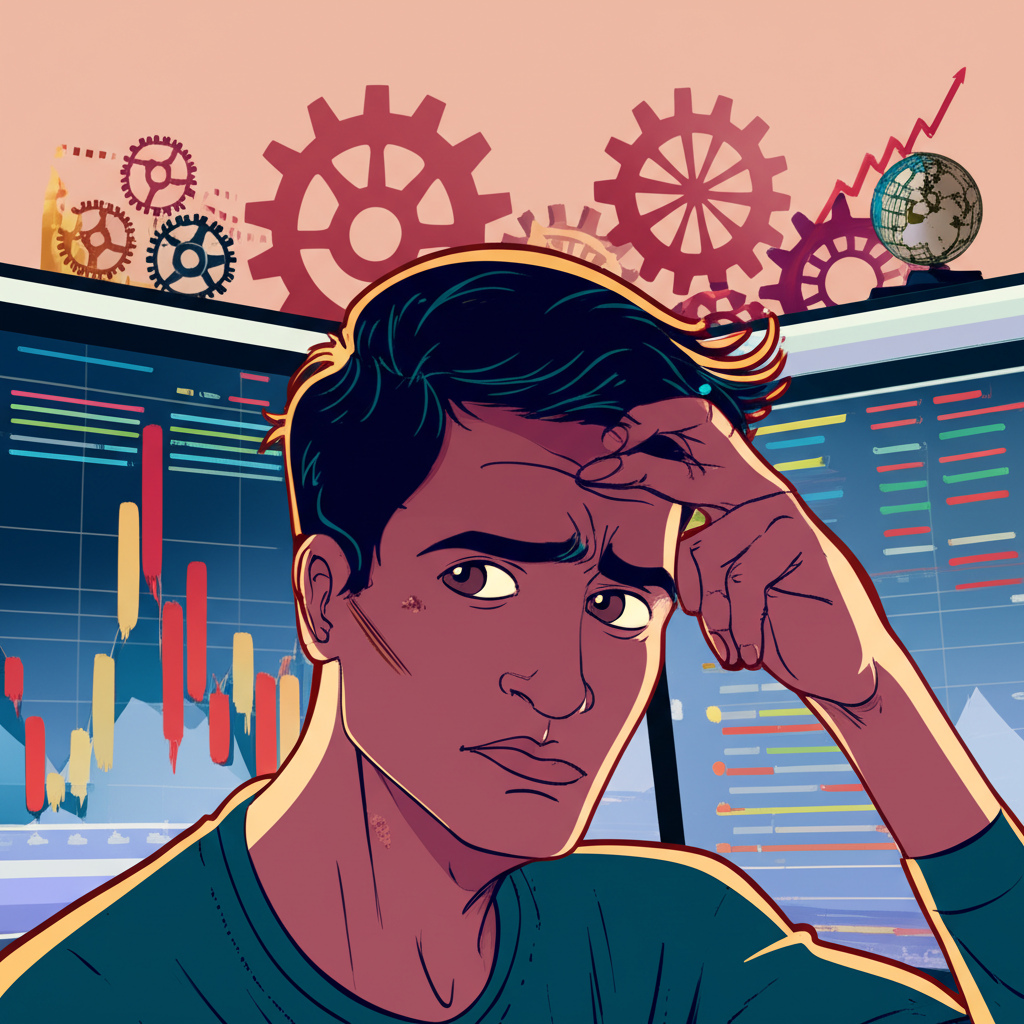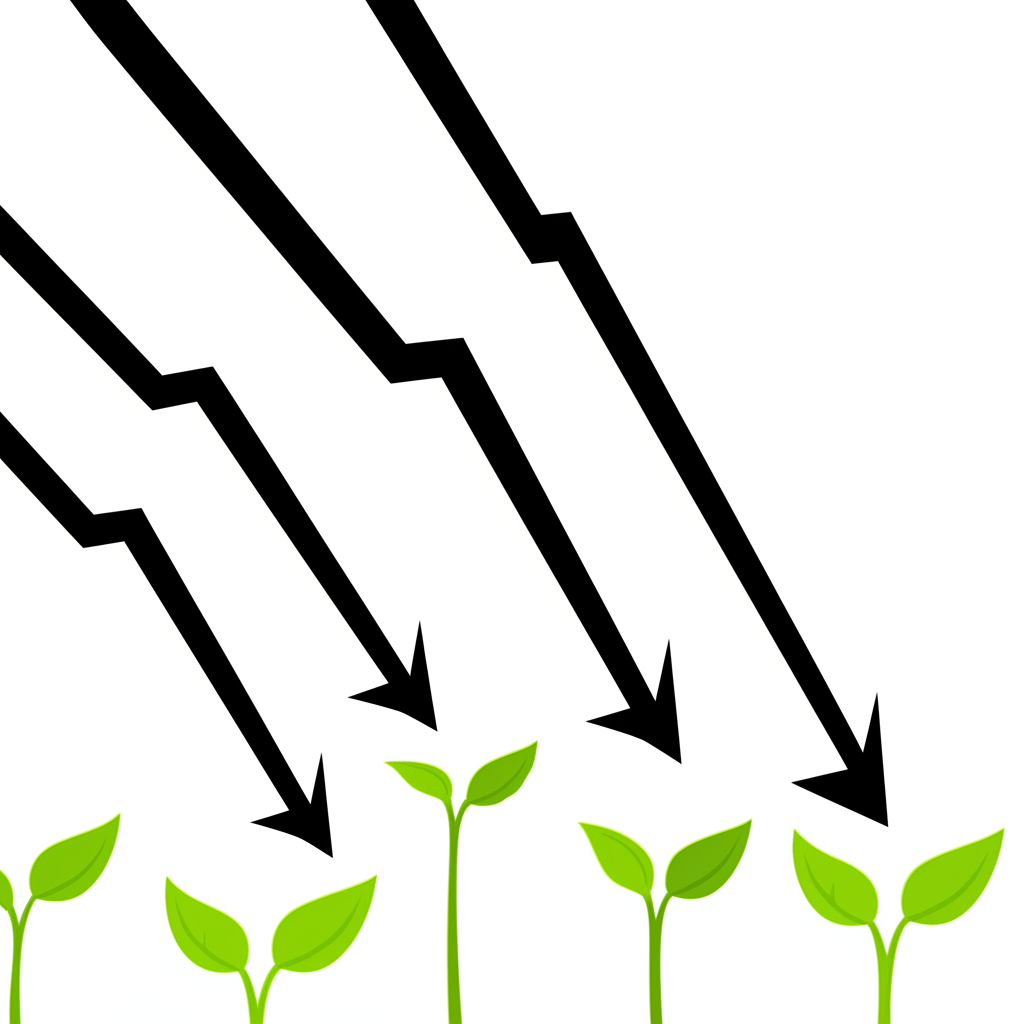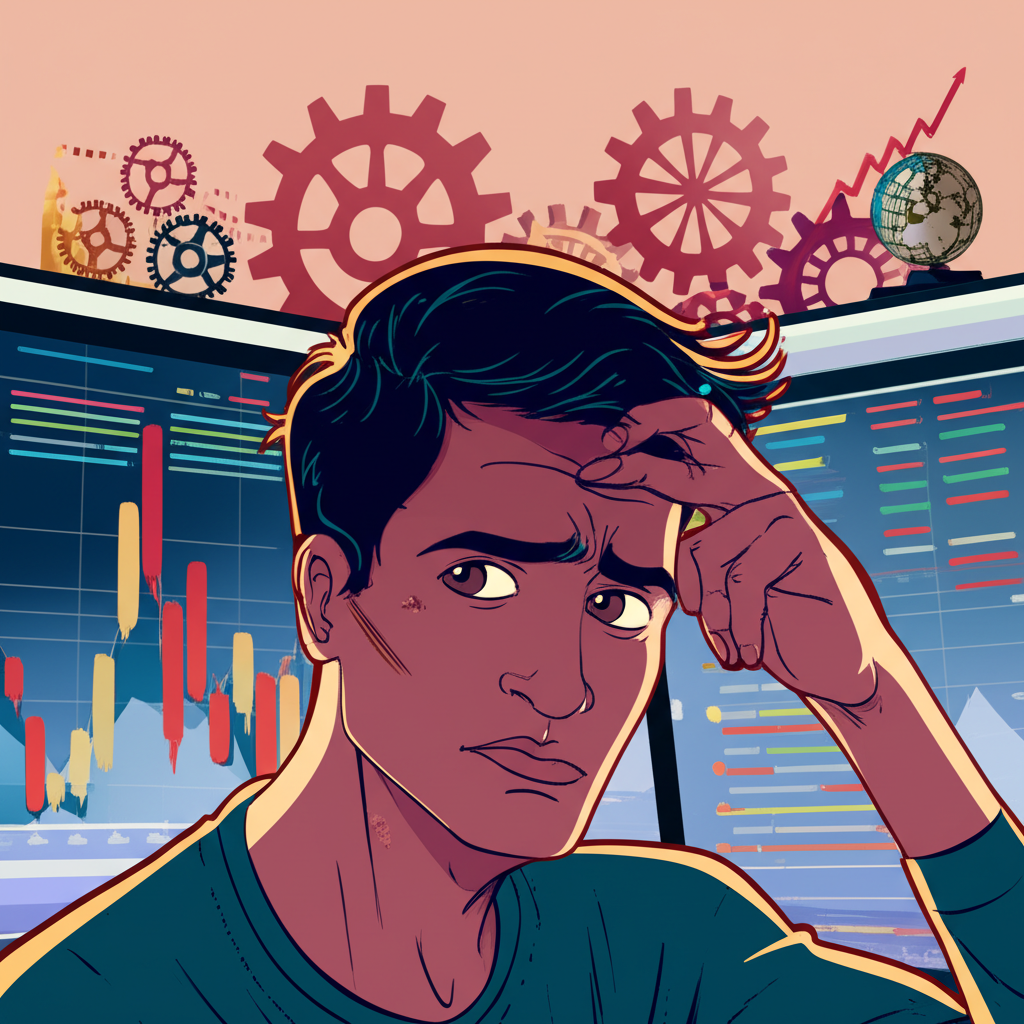Understanding the Jitters Around a Potential Stock Market Crash
When the words “stock market crash” enter the conversation, even the most experienced investors often feel a flicker of unease. In today’s fast-moving world—shaped by economic fluctuations, global tensions, and rapid technological change—market volatility isn’t just a possibility; it’s a reality many are watching closely. Retirement funds, investment portfolios, and long-term financial plans hang in the balance for millions. Yet, amid the headlines and speculation, clarity is essential. This article cuts through the fear-driven noise to deliver a balanced, data-backed look at whether a crash is on the horizon. We’ll examine current market signals, draw insights from history, and, most importantly, equip you with practical strategies to strengthen your financial resilience—no matter what the market does next.

Are We Headed for a Crash? Analyzing Current Market Indicators and Expert Forecasts
There’s no single answer to whether a stock market crash is imminent. The financial landscape is shaped by a complex web of economic data, investor sentiment, and global developments. While warning signs exist, they don’t always lead to catastrophe. Understanding the key indicators—and how experts interpret them—can help separate real risk from market hype.
Key Economic Indicators Signaling Risk
Several macroeconomic metrics serve as early warning systems for potential downturns. Persistent inflation, for example, eats into consumer spending and corporate profits, often forcing central banks to tighten monetary policy. When interest rates rise, borrowing becomes more expensive for businesses and households alike, which can slow economic activity and reduce the appeal of stocks compared to fixed-income assets. The Federal Reserve’s rate decisions, closely tracked by markets, have a ripple effect across asset classes. Geopolitical instability—such as ongoing conflicts or trade disruptions—can also rattle investor confidence, disrupt supply chains, and trigger capital flight. Meanwhile, a sustained drop in corporate earnings or a sharp decline in consumer sentiment can signal weakening fundamentals beneath the surface. These factors don’t operate in isolation; their convergence increases the odds of market stress.

What Leading Experts and Institutions Are Saying
Wall Street’s top analysts and financial institutions often present a split view. Some strategists at firms like JPMorgan and Goldman Sachs point to stretched valuations in certain sectors—especially tech—as a red flag. Others highlight strong labor markets and resilient consumer spending as reasons to remain cautiously optimistic. The debate centers on whether the economy will achieve a “soft landing”—slowing inflation without tipping into recession—or face a sharper downturn. These differing perspectives reflect the inherent difficulty of forecasting. While expert analysis provides valuable context, it’s rarely predictive with pinpoint accuracy. Instead of chasing consensus, investors benefit more from understanding the range of possible outcomes.
The Role of Emerging Factors: Could AI Trigger the Next Downturn?
Beyond traditional metrics, new forces are reshaping market dynamics. Artificial intelligence, while a driver of innovation and efficiency, introduces fresh uncertainties. Rapid AI adoption could disrupt labor markets, leading to job displacement in certain industries. It might also inflate valuations in tech-heavy portfolios, creating pockets of overvaluation. Additionally, algorithmic trading—already responsible for a large share of daily volume—could amplify volatility during periods of panic. While AI itself isn’t likely to “cause” a crash, its integration into financial systems may accelerate market swings or expose hidden vulnerabilities. As with past technological shifts, the real risk lies not in the technology itself, but in how quickly markets adapt—or fail to adapt—to the changes it brings.
Stock Market Crashes Through History: Lessons from the Past
History doesn’t repeat itself exactly, but it often rhymes. Every major market crash has unique triggers, yet common themes—overconfidence, leverage, and panic—recur. By studying past downturns, we gain perspective on how markets evolve and recover.

Major Crashes and Their Causes
The 1929 crash, known as Black Tuesday, followed a decade of speculative frenzy and loose credit, ultimately leading to the Great Depression. In 1987, Black Monday saw the Dow plunge nearly 22% in a single day, fueled by automated trading programs and investor panic. The dot-com bubble burst in 2000 after years of inflated valuations for internet startups with little to no profits. The 2008 financial crisis stemmed from risky mortgage lending, complex derivatives, and systemic failures in the banking sector. And in 2020, the market dropped sharply within weeks due to the global pandemic and sudden economic shutdowns. Each event was devastating at the time, but none marked the end of the market. Instead, they were followed by rebounds—sometimes slow, sometimes swift—proving that downturns, while painful, are part of a larger cycle.
Market Recovery and Resilience
One of the most powerful lessons from history is the market’s ability to recover. Every bear market—defined as a 20% or greater decline—has eventually been followed by a bull market. On average, bear markets last around 9 to 10 months, while bull markets tend to run for years. This asymmetry favors long-term investors who stay the course. Data from Bloomberg’s historical market records consistently show that investors who remained invested through downturns significantly outperformed those who moved to cash. Recovery doesn’t happen overnight, but time in the market has historically been more valuable than attempts to time it. Resilience isn’t just a pattern—it’s a feature of the financial system itself.
Crash vs. Correction: Defining Market Downturns
Not every market dip is a disaster. Confusing normal volatility with a full-blown crisis can lead to poor decisions. Understanding the difference between a correction and a crash helps maintain perspective.

A market correction, typically a 10% to 20% drop from a recent high, is a common occurrence—happening roughly once every year or two. It often serves as a reset, cooling off overheated sectors and bringing valuations back in line. Corrections can be triggered by earnings disappointments, policy changes, or shifts in investor sentiment. They’re usually short-lived and don’t necessarily signal deeper economic trouble.
A stock market crash, by contrast, is far more dramatic. It involves a rapid, widespread plunge of 20% or more, often unfolding over days or weeks. Crashes are usually tied to systemic shocks—economic recessions, financial crises, or major geopolitical events. The psychological impact is greater, and recovery can take longer. But even in the worst crashes, markets have always bounced back. Recognizing this distinction helps investors avoid overreacting to normal market fluctuations while staying alert to genuine risks.
Debunking Market Crash Myths and Overhyped Predictions
The financial media thrives on fear. Headlines about looming crashes grab attention, but they often distort reality. Separating fact from fiction is crucial for sound decision-making.
The Frequency and Accuracy of Crash Predictions
Warnings about an impending crash surface regularly—sometimes multiple times a year. Yet most of these predictions never come true. The truth is, accurate market timing is extraordinarily difficult. Even seasoned economists struggle to predict the exact timing and magnitude of downturns. More often, experts can explain why a crash happened only after it occurs. This hindsight bias fuels a cycle of overprediction. Investors who act on every alarm risk missing out on gains or locking in losses unnecessarily. The market’s unpredictability isn’t a flaw—it’s a feature. Instead of chasing predictions, it’s wiser to prepare for volatility as an inevitable part of investing.
Why “Timing the Market” is a Losing Strategy
One of the most persistent myths is that investors can successfully sell before a crash and buy back at the bottom. In reality, this is nearly impossible to execute consistently. Markets often rebound sharply and without warning. Research from the CFA Institute shows that missing just a handful of the market’s best days—many of which occur during or immediately after steep declines—can drastically reduce long-term returns. For example, staying invested through the 2008–2009 crisis yielded far better results than exiting and trying to re-enter later. Dollar-cost averaging—investing fixed amounts at regular intervals—removes emotion from the equation and naturally lowers your average cost over time. A disciplined, long-term approach consistently outperforms speculative timing attempts.
How to Prepare for a Potential Stock Market Crash: Investor Strategies
You can’t control the market, but you can control your response. Preparing for downturns isn’t about predicting them—it’s about building a resilient financial foundation that can withstand them.
Fortifying Your Portfolio
Diversification remains the cornerstone of risk management. Spreading investments across asset classes—such as stocks, bonds, real estate, and commodities—reduces the impact of any single sector’s decline. Within equities, diversifying across industries and global markets adds another layer of protection. Regularly reviewing your risk tolerance ensures your portfolio aligns with your goals and timeline. Younger investors, with decades until retirement, can afford to take on more equity exposure. Those nearing retirement may prioritize capital preservation with a higher allocation to bonds or stable income assets.
Ensuring Financial Liquidity
Having a cash buffer is just as important as your investment strategy. A solid emergency fund—covering three to six months of living expenses—protects you from being forced to sell investments at a loss during a downturn. This liquidity provides peace of mind and keeps your long-term plan intact, even when unexpected costs arise.
Rebalancing and Dollar-Cost Averaging
Rebalancing your portfolio annually or semi-annually helps maintain your desired risk level. If stocks have outperformed, you may sell a portion to buy bonds, effectively locking in gains and buying undervalued assets. Dollar-cost averaging works hand-in-hand with this strategy, allowing you to invest steadily regardless of market conditions. Over time, this approach smooths out purchase prices and reduces the risk of buying at a peak.
Staying Calm and Avoiding Panic
Emotional discipline is perhaps the most underrated skill in investing. When markets fall, fear can drive impulsive decisions—like selling at the worst possible moment. Remind yourself of your long-term goals and the historical pattern of recovery. Avoid sensational headlines and social media noise. A calm mindset, supported by a clear plan, is your best defense against volatility.
What to Do If the Stock Market Does Crash
If a crash unfolds, your preparation will be your greatest asset. A well-thought-out plan helps you respond rationally instead of reactively.
Begin by reassessing your financial situation. Has anything changed in your personal life that affects your goals or risk tolerance? For most long-term investors, the answer is no. Avoid the urge to sell in a downturn—this turns paper losses into real ones and prevents you from benefiting from the eventual rebound. Instead, if your financial position allows, consider viewing the crash as an opportunity. High-quality assets often go on sale during market lows, offering strong long-term value. If you’re uncertain, consult a financial advisor. An objective professional can help you evaluate your portfolio, adjust your strategy if needed, and keep your focus on the bigger picture.
Conclusion: Navigating Uncertainty with a Long-Term Perspective
The question isn’t *if* the market will experience downturns—it’s *when*. Crashes and corrections are inevitable parts of the investment journey. But history shows they are also temporary. Instead of fixating on doomsday predictions or trying to outsmart the market, the smartest move is to focus on what you can control: diversification, discipline, and time.
By building a resilient portfolio, maintaining liquidity, and sticking to a long-term strategy, you position yourself not just to survive market storms, but to emerge stronger. Volatility isn’t the enemy of wealth—it’s often the pathway to it. Consistent, rational investing in quality assets, regardless of short-term swings, remains the most proven method for growing wealth over decades. Stay informed, stay prepared, and most of all, stay invested.
Frequently Asked Questions About Stock Market Crashes
1. Is the stock market predicted to crash soon?
While various experts often express concerns about market conditions, consistent and accurate predictions of an imminent stock market crash are rare. The market is influenced by countless unpredictable factors, making definitive forecasts virtually impossible. It’s more common to see a range of opinions rather than a consensus on an impending crash.
2. Should I pull my money out of the stock market if I’m worried about a crash?
For most long-term investors, pulling money out of the market based on fear of a crash is generally not advised. This strategy, known as “timing the market,” often leads to missing out on significant recovery periods and can severely impair long-term returns. A better approach is to ensure your portfolio is diversified and aligned with your risk tolerance.
3. Do I lose all my money if the stock market crashes?
No, a stock market crash does not mean you lose all your money. While the value of your investments will likely decrease significantly, well-diversified portfolios typically do not go to zero. Historically, markets have always recovered from crashes, often reaching new highs over time. Selling during a crash locks in losses, whereas staying invested allows for recovery.
4. Why is the market crashing in 2025?
There is no definitive prediction that the market will crash in 2025. Such specific year-based predictions are speculative. Market movements are complex and influenced by a multitude of economic, political, and social factors that unfold continuously. While economic cycles are natural, pinpointing the exact timing of a crash is not feasible.
5. How can I prepare my portfolio for a potential stock market crash?
Key preparation strategies include:
- **Diversification:** Spread investments across different asset classes, sectors, and geographies.
- **Emergency Fund:** Maintain sufficient cash reserves to avoid forced selling.
- **Risk Assessment:** Ensure your portfolio aligns with your personal risk tolerance and financial goals.
- **Dollar-Cost Averaging:** Invest a fixed amount regularly to average out purchase prices.
- **Rebalancing:** Periodically adjust your portfolio back to your target allocation.
6. What are the historical patterns of stock market crashes and recoveries?
Historically, stock market crashes (20%+ declines) are less frequent than corrections (10-20% declines). They are often triggered by economic recessions, financial bubbles, or external shocks. Crucially, every major crash in history has been followed by a recovery, with bull markets (periods of growth) typically lasting significantly longer than bear markets (periods of decline).
7. What are the key differences between a market crash and a correction?
A **market correction** is typically a 10-20% drop from a recent high and is a normal, often healthy, part of market cycles. A **market crash** is a more severe and rapid decline, generally exceeding 20% in a short period, often indicating deeper economic or systemic issues. The psychological impact and duration of recovery can also differ significantly.
8. How does current inflation impact the likelihood of a stock market crash?
High inflation can increase the likelihood of market volatility. Central banks often respond to persistent inflation by raising interest rates, which increases borrowing costs, slows economic growth, and can make equity investments less attractive. This can put downward pressure on stock prices and potentially contribute to a market downturn.

留言